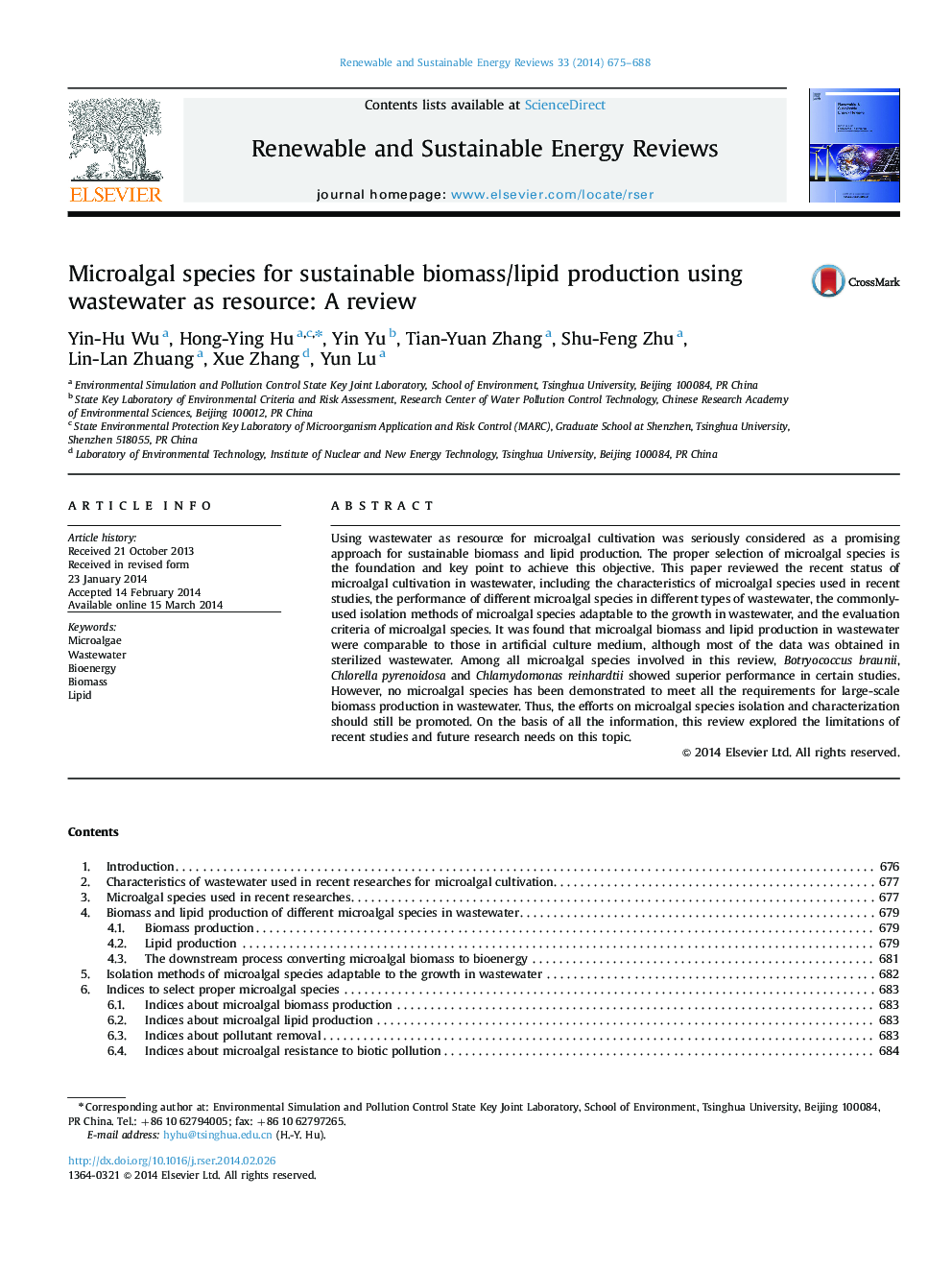| Article ID | Journal | Published Year | Pages | File Type |
|---|---|---|---|---|
| 1750312 | Renewable and Sustainable Energy Reviews | 2014 | 14 Pages |
Using wastewater as resource for microalgal cultivation was seriously considered as a promising approach for sustainable biomass and lipid production. The proper selection of microalgal species is the foundation and key point to achieve this objective. This paper reviewed the recent status of microalgal cultivation in wastewater, including the characteristics of microalgal species used in recent studies, the performance of different microalgal species in different types of wastewater, the commonly-used isolation methods of microalgal species adaptable to the growth in wastewater, and the evaluation criteria of microalgal species. It was found that microalgal biomass and lipid production in wastewater were comparable to those in artificial culture medium, although most of the data was obtained in sterilized wastewater. Among all microalgal species involved in this review, Botryococcus braunii, Chlorella pyrenoidosa and Chlamydomonas reinhardtii showed superior performance in certain studies. However, no microalgal species has been demonstrated to meet all the requirements for large-scale biomass production in wastewater. Thus, the efforts on microalgal species isolation and characterization should still be promoted. On the basis of all the information, this review explored the limitations of recent studies and future research needs on this topic.
